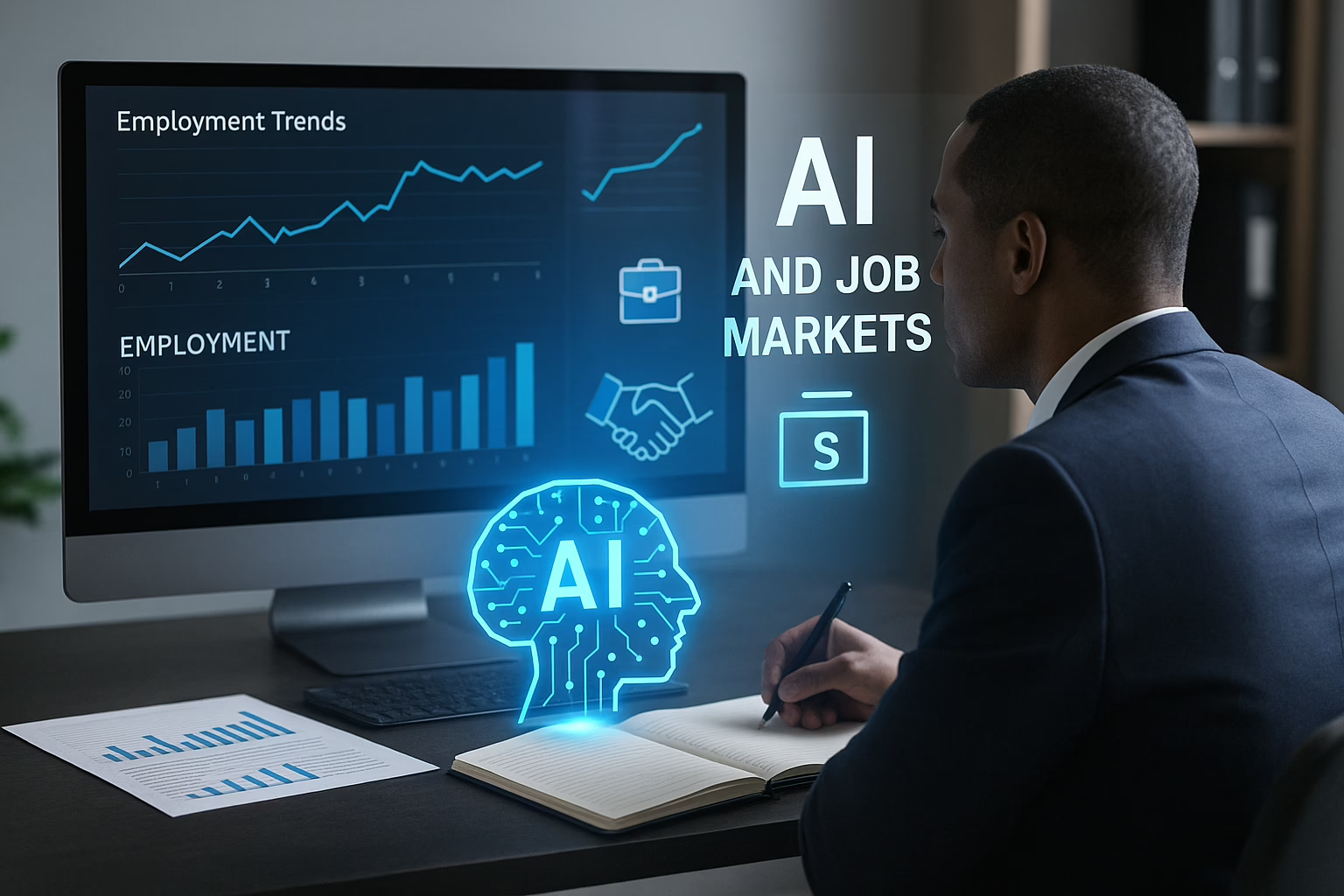Introduction
Have you ever wondered how the rapid advancement of artificial intelligence (AI) could shape the future of work? In a world increasingly reliant on technology, this question becomes more pressing for managers, leaders, and tech enthusiasts alike. The implications of AI on job markets, particularly in white-collar sectors, are profound, raising concerns about displacement and unprecedented changes in workforce dynamics.
According to the provided research, AI’s integration into daily work environments is projected to lead to considerable productivity gains and economic growth alongside potential job displacement. Understanding this duality is crucial for navigating the forthcoming labour landscape.
The Displacement Dilemma
As noted in the provided articles, influential voices in the AI industry are predicting significant transformations in the job market. For instance, Dario Amodei, CEO of Anthropic, posits that AI technology could eliminate up to half of entry-level office jobs in the near future. This raises important questions about how an increase in unemployment could coincide with robust economic growth, as labour economist Aaron Sojourner suggests that substantial productivity boosts would be required to support such a scenario.
Critics have expressed skepticism regarding these statements, arguing they may serve as marketing strategies rather than grounded predictions. The need for concrete evidence from AI companies concerning both the risks and benefits of their technologies has never been more crucial. The immediate consequence of these developments could see an initial spike in unemployment, echoing sentiments from a study that predicts full AI adoption might save up to 25% of private-sector work time—equating to the output of around six million workers.
While some traditional job roles may diminish, the dynamic nature of the job market could also create new positions. Thus, the narrative of AI entirely replacing jobs might be an oversimplification of a more complex reality. AI does not just take away opportunities; it also shapes and redefines roles, especially in areas like programming and project management where increased demand is noted.
AI’s Productivity Paradox
The idea that AI could enhance productivity rather than merely replace human labour is important to consider. Various research indicates that job demands will not be uniformly affected; some roles may see decreased demand while others flourish. Generative AI, for instance, can lead to heightened employee productivity and open new market opportunities, fundamentally changing workplace experiences.
Emerging AI tools like China’s DeepSeek illustrate how businesses that successfully integrate AI can gain competitive advantages in innovation and market dynamics. Collaboration among economic stakeholders—including businesses, workforce, and governments—will be key to maximizing the productivity and innovative potential that generative AI offers.
With proactive strategies, it may be possible to harness AI to bolster economic growth while simultaneously mitigating job displacement effects.
The Energy Consumption Challenge
As AI technology evolves and integrates into more aspects of daily life, the associated energy consumption has emerged as a major concern. An analysis from MIT Technology Review highlights the staggering energy demands of AI, particularly in data centres which have doubled their electricity consumption since 2017, now accounting for 4.4% of all U.S. energy consumption. This trend raises alarms as projections suggest that AI could consume over half of the electricity used in data centres by 2028.
The International Energy Agency (IEA) also emphasizes that electricity demand from data centers might exceed 945 TWh by 2030, with AI significantly driving this increase. The growing energy appetite raises questions regarding sustainable energy strategies. Notably, discussions are emerging about how to offset increased emissions through AI efficiencies while also considering the water consumption needed for cooling these massive data operations.
Legislators in both the U.S. and EU are starting to hold companies accountable for their carbon emissions and water use, indicating a shift towards greater transparency within tech industries. There’s a clear call for responsible AI development, ensuring that while harnessing AI benefits, environmental impacts are managed with care.
Final Thoughts
The intersection of AI and job markets is complex, outlined by both the potential benefits and challenges that lie ahead. As AI might displace existing roles, it also portends new opportunities, suggesting a transformation rather than a simple binary of loss and gain. Based on the provided materials, it becomes imperative for business leaders and policymakers to proactively shape the future of work through education, job creation, and infrastructural investment.
Ultimately, as AI continues to grow in significance, addressing its energy demands and environmental impact will be equally as crucial in ensuring a sustainable transition into the future of work.









